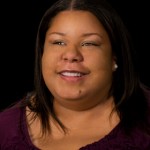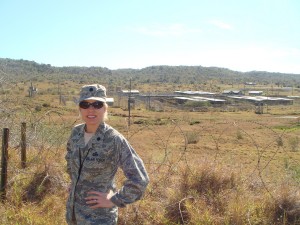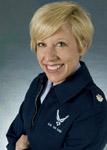This week, the PR New Pros blog is excited to delve deeper into the world of travel and tourism with the second part of our “Intro to Travel and Tourism PR” series. We already discovered the day-to-day life of a seasoned PR professional in the travel industry with Diane Centeno, APR, the director of marketing for SeaWorld Parks and Entertainment in part one. Now we continue with a specific look at the role of the Convention and Visitors Bureau with Kelly Ryan, communications and tourism coordinator at the Albuquerque Convention and Visitors Bureau.
As young PR professionals, I think it is safe to say that a great majority of us enjoy talking, writing and traveling – though not necessarily in that order. For me, it’s actually the reverse order.
When I was trying to figure out what I wanted to do with my life (a big question, indeed), my parents advised me to think about the things that made me the most happy, and then build a career around those things. Interspersed between family and friends, the Green Bay Packers, a well-executed cookout and hammock naps, I came to realize that the time that I was truly happiest was when I was traveling. I came to find out there are jobs that combine travel with writing (and some talking). Enter my role at the Albuquerque Convention & Visitors Bureau (CVB).
If you aren’t sure what a CVB is, you’re not alone. The mission at my office is similar to many CVBs throughout the country—to stimulate economic growth by marketing a destination as a convention and visitor destination. Essentially, my bureau promotes tourism from both the leisure side (you and I) and the convention side (PRSA Travel & Tourism Conference). Today, many CVBs are becoming referred to as Destination Marketing Organizations (DMOs), a term that perhaps better describes our function.
While many CVBs/DMOs have a similar mission, all operate in a unique capacity. Some are contracted by the city, some are supported by lodgers tax, some have members or partners (businesses that pay or trade membership to be promoted), some have gigantic budgets, some have a one-person staff, etc. As you can imagine, a CVB operating in a city like Las Vegas would have many more resources available to it than a smaller destination like Eau Claire, Wisconsin (hometown shout out – go Blugolds!).
From a PR capacity, depending on the type of bureau you are at, you will have a unique role. In Albuquerque, I work on a seven-person communications and marketing team that essentially acts as an in-house agency supporting over 900 partner businesses. This team handles everything from social media for the destination to PR, marketing, advertising, group tour relations, communications and design. We serve as an extension of our partner businesses’ marketing arm, not a substitution for it. To simplify explaining how PR works in my office, I will highlight the three things that take up most of our time:
General PR Efforts
In my role, I support our communications and tourism manager in day-to-day PR and media relations efforts. I pitch stories, write press releases, keep current on local and national news, work with partner businesses and local conventions on PR efforts, monitor our clipping service, work with writers, update website content, etc. One thing I don’t do? Bill my hours. Maybe you like doing that. I appreciate not having to.
One thing I really like about working at a CVB is that most of the news that we deal with is positive. A new restaurant opening, a baby seal born at the zoo or a convention coming to town. Other than in disaster circumstances, most of the news that we deal with is not necessarily breaking news. This is not to say that things are slow at the office. We have 900 partners to keep in mind.
Imagine trying to keep track of 900 clients. Exactly.
Press Tours
Our bureau contracts with a public relations firm that specializes in media marketing for travel and tourism industry clients. While we host journalists and media outside of these press tours, a lot of time and effort goes into planning several major press tours each year. Albuquerque is unique in that it really offers something for many different audiences. We have great food, many outdoor recreation opportunities, wonderful weather, an infusion of Hispanic and Native American culture and many more offerings that attract travel and lifestyle media to the area. There is still a lot left to be discovered by the mainstream media about New Mexico as a whole, so we feel lucky to be promoting this area.
Social Media
Follow us! Fan us! Love us! We will reciprocate. Social media ends up taking a good portion of the day.
Of course there are other responsibilities that we have from a PR standpoint, but just like everyone else, those responsibilities change on a day-to-day basis. I feel it fitting to end this post with a quote by Caskie Stinnett that nicely ties tourism with public relations: “I travel a lot; I hate having my life disrupted by routine.”
Isn’t that the truth?
 Kelly Ryan, communications and tourism coordinator at the Albuquerque Convention and Visitors Bureau, is a graduate of the University of Wisconsin-Madison and an avid Badger and Packer fan, serving as the president of the Wisconsin Alumni Association for New Mexico. She is an active member of SouthWest Writers and is involved in her local PRSA chapter. In her free time, she enjoys traveling, playing sports and spending time with her Little Sister (Big Brothers, Big Sisters Program). Kelly was recently recognized as one of Destination Marketing Association International’s “30 Under 30.” Follow her on Twitter.
Kelly Ryan, communications and tourism coordinator at the Albuquerque Convention and Visitors Bureau, is a graduate of the University of Wisconsin-Madison and an avid Badger and Packer fan, serving as the president of the Wisconsin Alumni Association for New Mexico. She is an active member of SouthWest Writers and is involved in her local PRSA chapter. In her free time, she enjoys traveling, playing sports and spending time with her Little Sister (Big Brothers, Big Sisters Program). Kelly was recently recognized as one of Destination Marketing Association International’s “30 Under 30.” Follow her on Twitter.




